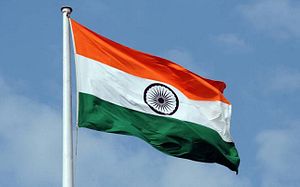As India celebrates its 72nd Independence Day this Wednesday, there is a new spring in its steps as it straddles the global firmament. India is no longer the coy diffident power of the past, when it was constantly treading on eggshells for fear of offending this or that power. Today’s India is a self-confident nation able to manage its external relations on its own terms without any ideological baggage. It can engage the United States as a strategic partner even as it can chart its own course vis-à-vis Russia and China. It can stand with China to raise its voice against global protectionism and yet it can stand up to China when its vital interests are targeted, like in Doklam last year. It can proclaim a historic relationship with Russia, but can manage to be candid about Russia’s obsession in viewing its every partnership through the prism of its struggle with the West. If there is one power that sits relatively confident in today’s rapidly evolving global dynamic when all other powers are openly competing with each other, it is India. Let there be no doubt about it.
As India’s economic weight has grown in international relations, its voice and partnerships are much sought after. A pluralist democracy growing rapidly at its own pace with all its inherent contradictions is a story which a world deeply in crisis wants to hear. And Indian policy makers increasingly are not averse to narrating their case. For any nation — and in particular for a self-proclaimed rising power — it is crucial that it sets out its own narrative about its place in the global pecking order. For the last two decades, China has managed to do it extremely effectively that after two decades of being a rising power, the world suddenly woke up one day to a China which has seemingly arrived. Indian leadership today is signaling that it too has grown up and has recognized that the need of the hour is to link India domestic development story with the global one.
The Modi government has given Indian foreign policy a new dynamism: on this there is no debate. The debate as it is made out in certain quarters is whether there is more sound than substance. Any honest assessment of this will have to wait for a few years but the approach to reach out to most parts of the world in a regular manner is well-intentioned. African nations, despite our historical ties, have often complained that New Delhi has been episodic in its engagement with the continent. In the last four years, there has been a sustained outreach to our traditional friends. In this day and age it is no longer sufficient to harp on history. What is needed is a pragmatic forward looking agenda. And this is an aspect of Indian foreign policy that we see evolving over the last few years as New Delhi’s engagements with Africa, Latin America, West Asia, and Southeast Asia have gained a new traction.
As the world changes around India in ways that at times seems incomprehensible, New Delhi doesn’t really have the luxury of banking on age-old slogans. India needs new partners and new partnerships, it needs a more robust footprint in various parts of the world, and it needs a narrative about what it intends to do with the accretion of its material capabilities. Indian policymakers too are coming to terms with this weight of history. India’s evolving debates about its environmental policy or trade policy or even military presence abroad underscore this reality.
The challenges, for sure, are equally compelling. The challenge from Pakistan remains as contentious as ever and the growing Chinese footprint in the wider South Asian and Indian Ocean region is challenging India on multiple fronts. There are no easy answers as Indian neighbors will try not to choose between two rising powers in their vicinity. And China will intrude whether we like it or not. After refusing to build capabilities to deter China for decades, China’s rise will remain the single most important issue facing the nation for the foreseeable future. Yet, it is a sign of India’s strategic evolution that today Pakistan problem is widely considered a subset of India’s China problem. India’s horizons are widening and China’s rise has compelled our policymakers to take this challenge seriously.
A positive legacy of Modi’s foreign policy over the last four years is a growing interest among the nation’s youth about Indian foreign policy priorities beyond Pakistan. This is important because Indian strategic debates for far too long have been dominated by retired bureaucrats, select academics and Delhi-based media. As India rises and overcomes the “hesitations of history,” a more dynamic conversation on the causes and consequences of India’s rise is the need of the hour. And Modi has indeed pushed foreign policy to the center stage of India’s everyday discourse. Governments will come and go but India’s sustenance of its foreign commitments will ultimately depend on how invested the common Indian is in shaping her nation’s foreign policy profile.

































